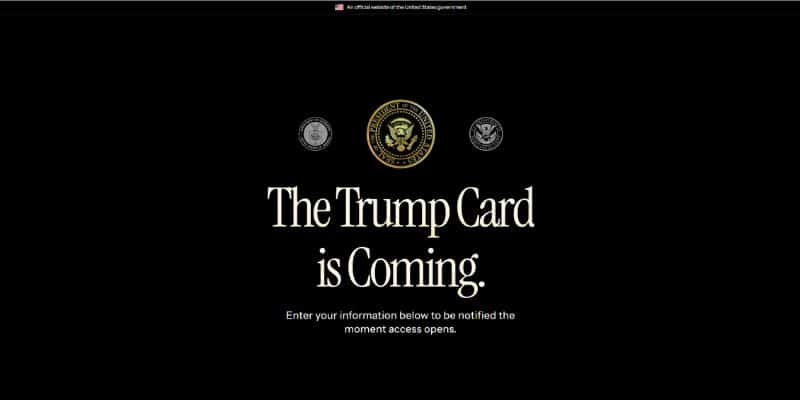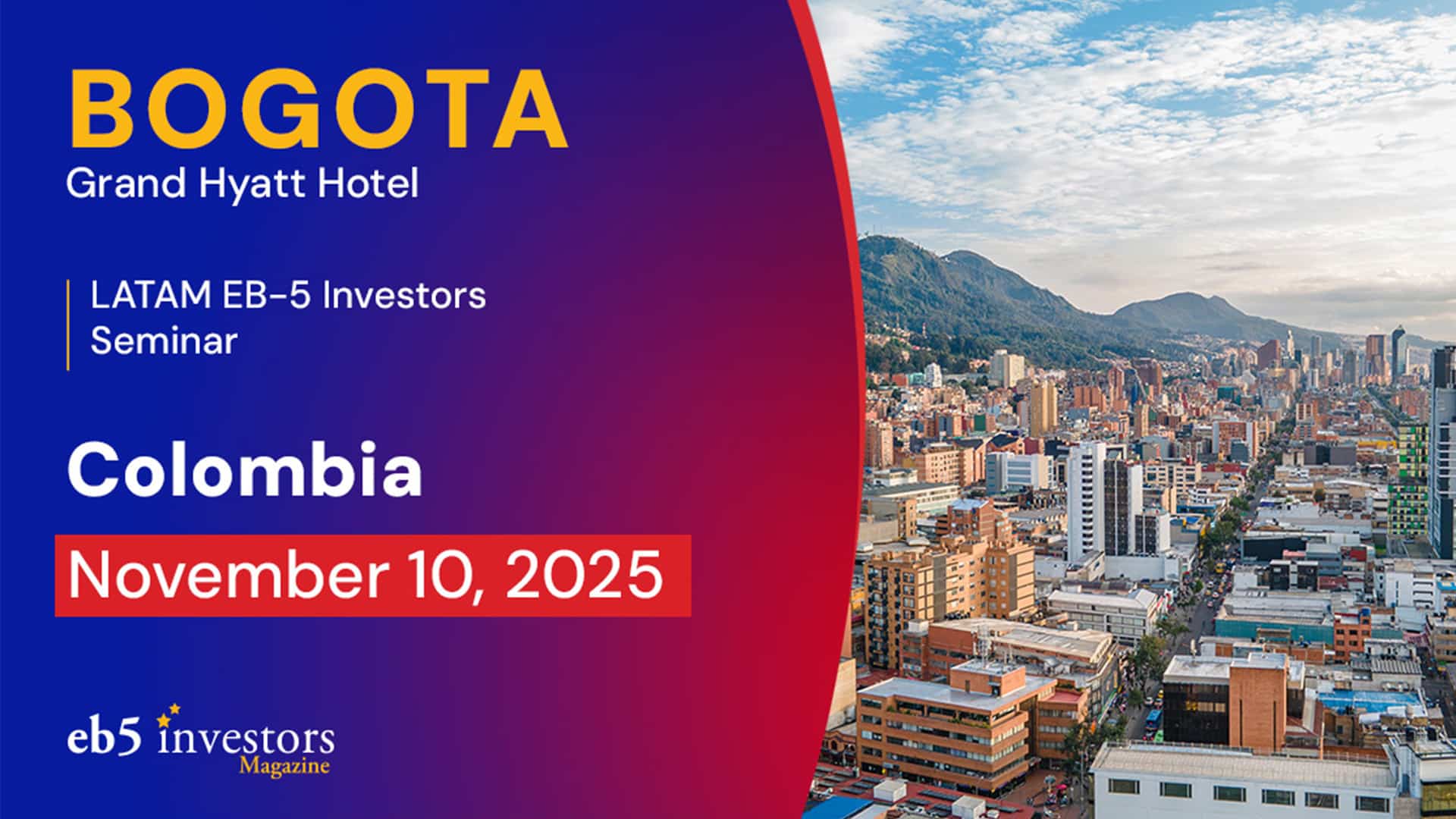
The official website for the U.S. Gold Card visa program is now live. The www.trumpcard.gov site allows interested foreign investors to register for information about purchasing the $5 million card. However, official applications are not yet available.
Visitors can enter their personal information, including their name, region, and email address, which will trigger a notification when applications for this program become available. Once the investor fills out the form, they will receive a verification code via email.
Immigration attorneys and organizations react to the launch of the gold card website
In separate statements, U.S. immigration organizations welcomed the steps the Trump Administration is taking towards making the gold card an option.
American Immigrant Investor Alliance (AIIA) said: “We at AIIA are glad that the current presidency is taking a renewed interest in this pathway and we welcome the president’s confirmation of his longstanding support for legal immigration that benefits America by fostering job creation through investment.”
Meanwhile, industry trade association IIUSA stated: “We appreciate the leadership of President Trump and Secretary Lutnick on this important issue and look forward to continued engagement with the Trump Administration and Congress to enhance the Gold Card’s effectiveness and value to the U.S. economy.”
However, EB-5 and U.S. immigration attorneys expressed a mix of cautious optimism and skepticism toward the website launch and the U.S. Gold Card program.
Mitchell Wexler, senior counsel at Fragomen, acknowledged the launch as a first step, though a modest one. “Baby steps,” he said, noting that interested parties, including lawyers, can now sign up for notifications. “Let’s also not forget this can only be achieved by legislation and not an Executive Order, which makes this path to a green card less than imminent.”
Other attorneys cautioned against the website’s lack of information about when and how the application process will materialize.
Marjan Kasra from Lawmaks says that, while the branding is bold and the messaging clear, “the initiative remains a proposal and lacks the legislative backing required to establish a new immigrant visa category. Unlike the Gold Card, EB-5 is the only investment-based immigration program that is congressionally authorized and currently grants lawful permanent residence in the United States.”
Edward Beshara from Beshara PA pointed out the lack of procedural specifics, asking, ‘Who will be able to obtain permanent residency within the foreign national’s family?’ Without clear advantages for applicants, the idea of committing $5 million to secure U.S. residency raises doubts about its viability.”
Oliver Yang from Reid & Weise notes, “It’s been three months since the grand unveiling of the gold card, and so far we’ve been treated to a minimalist website, zero policy detail, and no legal framework whatsoever. For now, it still seems the gold card remains more of a political gesture than a viable immigration policy.”
Meanwhile, Yuliya Veremiyenko-Campos from YVC Legal points out that the website launch could signal that “we will be seeing the proposed regulations about the program soon.” However, she cautions that there is no currently no proposed legislation or tegulations “as to what this program will be, what requirements these individuals must meet what benefits the card will offer.”
Where is the Gold Card?
The absence of clarity leads some attorneys to question the program’s structural foundation. Tony Wong from Wong & Associates, Lawyers, P.C., stated that the Gold Card program has yet to reveal any mechanisms or guidelines, making it “still a mystery.”
Wong further recalled that “there is no indication that the Gold Card Program is going to replace the EB-5 program, and in fact, it is almost impossible to replace EB-5 with just administrative action. I still think EB-5 and Gold Card will eventually be co-existing.”
Robert C. Divine from Baker Donelson, Bearman, Caldwell & Berkowitz, PC, insists that “the Gold Card is not a reality and remains only an interesting idea that faces significant policy debate in Congress before it could be enacted. Meanwhile, EB-5 remains a reality.”
Furthermore, Charles Kuck from Kuck Baxter Immigration LLC expressed skepticism about the initiative. “This is like watching a dragon egg hatch. You know it’s not real, but you want to see it anyway.”
Tammy Fox-Isicoff from Rifkin & Fox-Isicoff P.A. also expresses doubt about the future of this visa program. “It is not a reality until it is properly passed by Congress. As we know, this administration does things any way they want. But, that doesn’t mean it will not be challenged.”
Peter Zhang from Origin Law P.C. adds, “While the website is real, the so-called ‘U.S. Gold Card’ is nowhere near a viable option for investors seeking permanent residency or a credible alternative to the EB-5 program. Some reports have referred to it as a waitlist, but in reality, the site is merely a solicitation of interest—an expression of support for an undefined concept with no formal terms or legal framework.”
Zhang considers that the data collected through the registration form “may be used to inform future legislative proposals, but it’s important to understand that the administration cannot create a new path to permanent residency or citizenship without an act of Congress. Investors should view this for what it is: a website promoting a concept—not a policy, program, or guarantee.”
Immigration lawyer Bernard Wolfsdorf from WR Immigration (Wolfsdorf Rosenthal LLP) registered to receive the same information that potential investors would.
“I got a reply saying, ‘[My] Journey Begins’ and that ‘[I will] be the first to hear when access opens.’ So now I am waiting to see if Congress will enact a new program, or if the Administration will try to do this by regulation, which seems very risky. Maybe they announce something, but right now its looks very flimsy,” he said.
President Trump has indicated that his program is legal and that it does not require Congressional approval, as it doesn’t grant citizenship to gold card holders. The administration has yet to share additional information about how this pathway will function.
What is the U.S. Gold Card?
The proposed Gold Card program aims to provide a pathway to citizenship for wealthy individuals worldwide who wish to purchase the Trump administration’s card for $5 million.
Since its announcement in February, the administration has projected that if one million investors participate, it could generate $5 trillion for the U.S. The President has also mentioned the possibility of offering the card to ten million people, which could potentially raise $50 trillion for the U.S. government.
The plan includes using $36 trillion to eliminate the current outstanding U.S. Treasury debt and allocating the remainder for other purposes. Among the features of the new visa program is an expected taxation system that would only charge taxes on income generated within the U.S., a benefit that the current EB-5 program does not provide.
How will the Gold Card impact the EB-5 visa program?
Initially, President Trump presented the Gold Card as an alternative to the existing EB-5 Immigrant Investor Program.
This initial approach sparked debate regarding its potential impact on the existing EB-5 visa program. Since then, the government’s narrative has morphed to statements suggesting that the Gold Card would coexist with the U.S. EB-5 investor visa.
EB-5 specialists argue that this coexistence is possible because both visa programs cater to different groups of investors. Additionally, industry professionals assert that the Trump Administration cannot eliminate the current EB-5 program without Congressional approval.
The EB-5 program is expected to remain operational until September 2027, as established by its reauthorization through the Reform and Integrity Act of 2022.
Recent changes in U.S. Immigration Policies
The official launch of the Gold Card website takes place amid ongoing changes in the U.S. immigration landscape.
These changes include a visa and travel ban affecting nationals from 19 countries, updates to the medical examinations required for adjusting immigration status, and the suspension of new student visa appointments at U.S. embassies and consulates until a social media screening and vetting process is implemented for all student visa applicants.
Additionally, there is a six-month suspension on entry into the United States for any new Harvard University students applying as nonimmigrants under F, M, or J visas.
There has also been an announcement regarding the revision of visa criteria, which includes the potential revocation of visas for Chinese students with ties to the Chinese Communist Party or those studying in critical fields.
As nationwide protests and unrest continue in the United States in response to recent ICE enforcement actions, the current immigration climate in the U.S. remains tense.
DISCLAIMER: The views expressed in this article are solely the views of the author and do not necessarily represent the views of the publisher, its employees. or its affiliates. The information found on this website is intended to be general information; it is not legal or financial advice. Specific legal or financial advice can only be given by a licensed professional with full knowledge of all the facts and circumstances of your particular situation. You should seek consultation with legal, immigration, and financial experts prior to participating in the EB-5 program Posting a question on this website does not create an attorney-client relationship. All questions you post will be available to the public; do not include confidential information in your question.








